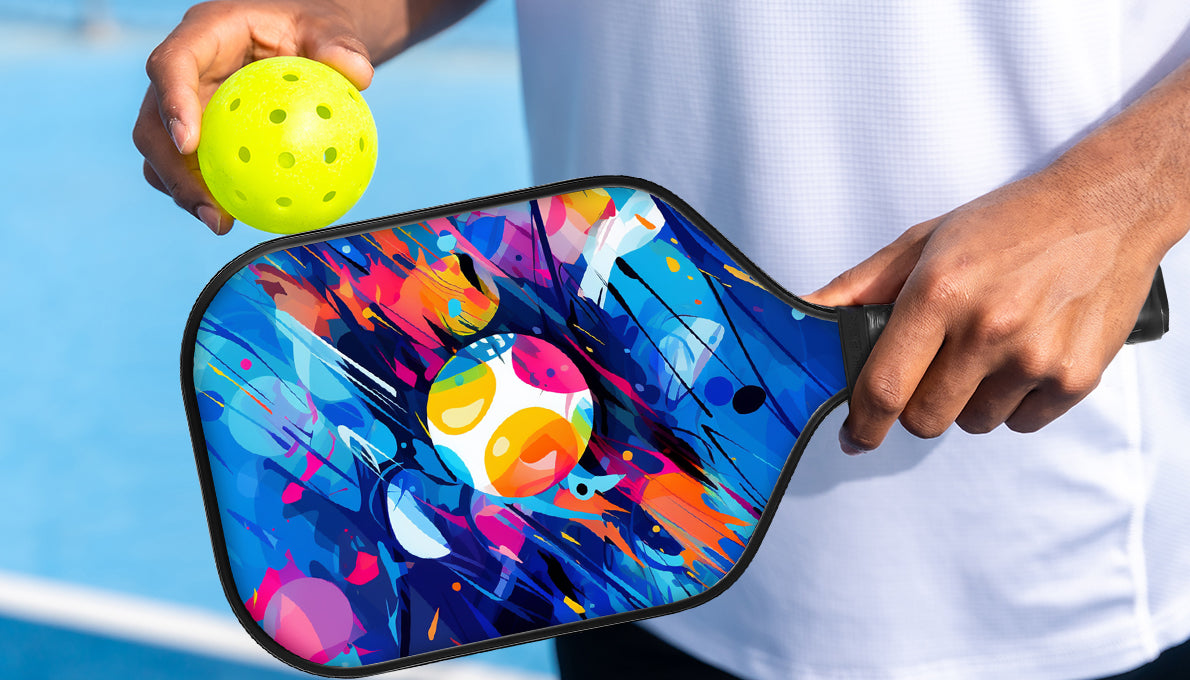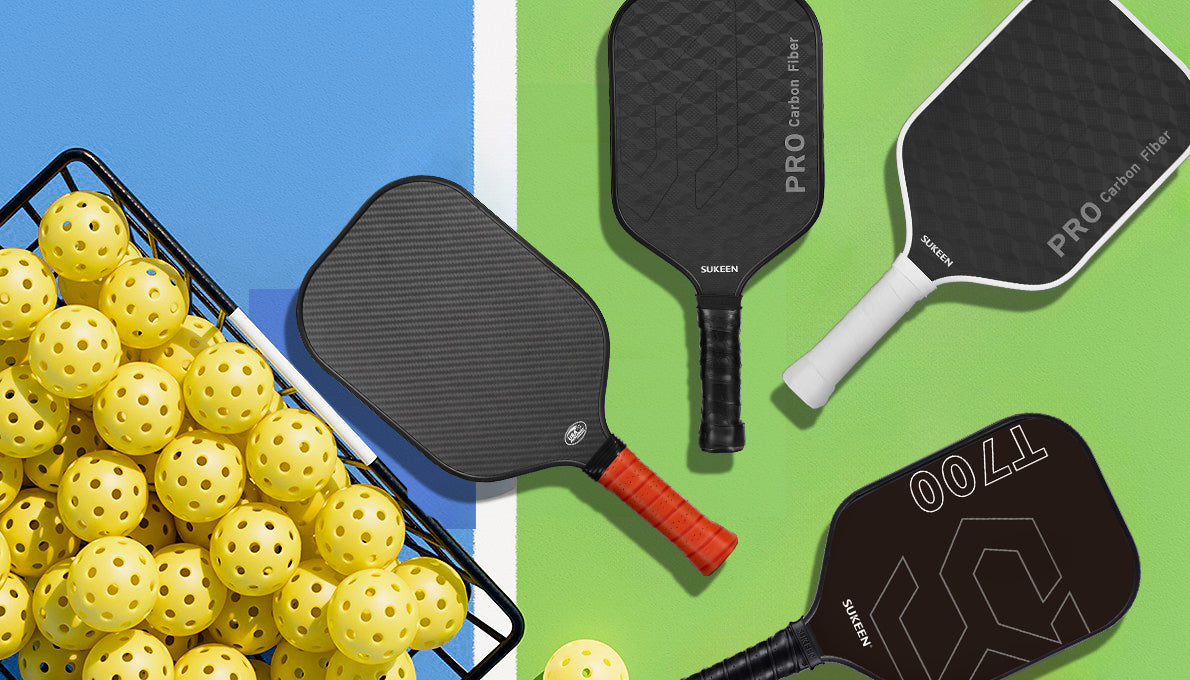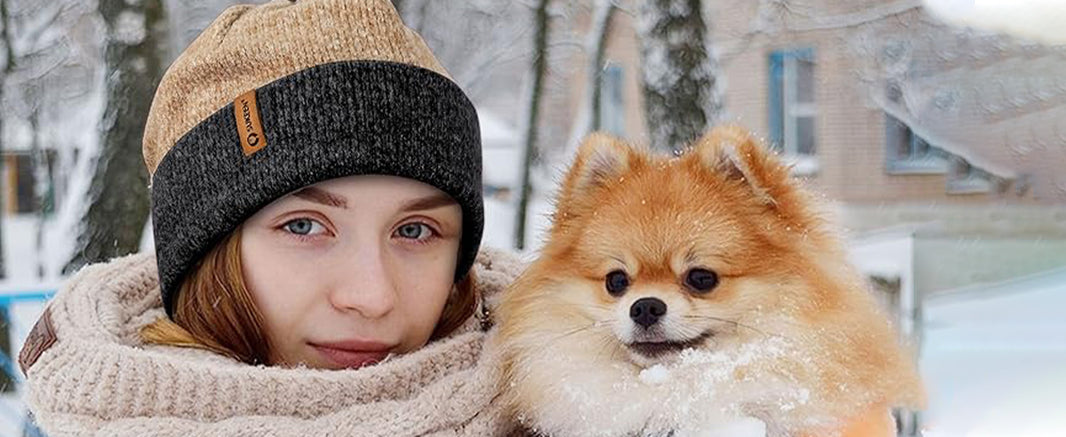Pickleball Doubles Strategy Guide
Ⅰ. Basic Skills for Doubles MatchesⅡ. Tactical Strategies in Doubles Games
Ⅲ. Marking and Rotation Tactics in Two-Player Games
Ⅳ. How to Implement Marking and Rotation Tactics
Ⅴ. Common Mistakes and Correction Methods in Doubles Games
Ⅰ. Basic Skills for Doubles Matches
1. Positioning Skills
In doubles matches, positioning skills are crucial. They not only affect the performance of each player but also determine the overall defensive and offensive efficiency of the team.
a) Offensive Positioning
When attacking, players should usually position themselves closer to the net. The front court players (net players) stay near the net, ready to make quick volleys and counterattacks, while the back court players should stand near the baseline, ready to launch powerful shots. In many famous doubles matches, players such as Ben Johns and Simone Jardim have demonstrated efficient offensive positioning. For example, Ben Johns uses flexible positioning to make volleys at the net, and he often uses this positioning to exert pressure and disrupt the opponent's rhythm. Offensive positioning tests players' quick reaction ability and good cooperation. Front court players need to keep stable shots while moving quickly, while back court players need to have strong hitting power and accuracy. When choosing the right racket to improve your offensive performance, you can refer to the article "Master the Secret of Spin Ball" to learn how to choose the best spin racket.
b) Defensive Position
When defending, players should maintain a wide stance to ensure that they can cover the entire court. The two players should coordinate with each other, one responsible for the front court defense and the other for the back court. The famous player Kyle Yates showed how to effectively deal with the opponent's offense through flexible positioning and accurate judgment. He kept full coverage of the court by constantly adjusting his stance. Defensive positioning requires players to have agile movement and good communication skills. The two players need to maintain coordination through hand gestures or voice signals to ensure effective coverage of the defensive area. In order to enhance defensive capabilities, it is also important to choose the right racket material. For more information about racket materials, you can refer to the article "What is the best material for a pickleball paddle?".
2. Serving Technique
Serving is a key part of doubles games. The correct serving technique can not only help the team get scoring opportunities, but also affect the opponent's receiving strategy. When serving in doubles, players should use their serve position to influence the opponent's serve. For example, by changing the angle and depth of the serve, the server can force the opponent into a disadvantageous position. Top players such as Lucy Kovalova use high-spin serves or short serves when serving to force the opponent into a passive state. This technique can effectively suppress the opponent and make it difficult for them to make an effective return. Serving skills test the player's accuracy and tactical thinking. The server needs to quickly adjust the serving strategy according to the opponent's position and game situation. When serving, the choice of racket will also affect the effect of the serve. Choosing a suitable racket can improve the accuracy and power of the serve.Regarding what to pay attention to when choosing a racket, you can check out the article "What to Look for in a Pickleball Paddle?".
3. Receive and Serve Skills
Receiving and serve is a crucial technical link in doubles games. Correct receiving and serve skills can significantly improve the winning rate of the game. When receiving and serve, players need to react quickly according to the opponent's serve angle and depth, return the ball to the opponent's open area or strive for offensive opportunities through accurate returns. For example, top player Catherine Parenteau improved her success rate on serve returns by adjusting her stance and angle of attack when receiving.Serving skills require players to have good judgment and quick reaction ability. In doubles, the receiver needs to coordinate with his partner to ensure that each serve is effectively hit against the opponent's defense.
4. Net Volley
Net volley is an important technique in doubles. It can effectively suppress the opponent and create offensive opportunities. When volleying at the net, the player needs to keep a low posture, react quickly and make accurate shots. By mastering the net volley technique, you can effectively prevent the opponent's net attack and create offensive opportunities for yourself. For example, the famous player Matt Wright showed excellent reaction ability and technique when volleying at the net. He successfully suppressed the opponent's offensive through accurate volleys and quick footwork. Net volley tests the player's flexibility and ball sense. In doubles, players need to improve the stability and accuracy of their volleys through constant practice. If you want to learn how to improve your performance in net volleys with a racket, it is recommended to read the article "Pickleball Paddle Single Player Game Tips".
5. Baseline Shots
Baseline shots are a common technique in doubles, which requires players to have strength and control. When hitting the ball from the baseline, players need to control the landing point of the ball through strength and accuracy, and can use a combination of high balls, angle balls, and deep balls to disrupt the opponent's defensive formation. The famous player Anna Leigh Waters performs very well in baseline shots. She is able to hit the ball to the corner of the opponent's court through powerful baseline shots. This shot not only exerts pressure, but also forces the opponent to move and cause errors. Waters effectively uses baseline shots to break the opponent's defense and create offensive opportunities by adjusting the angle and depth of the shot. The effect of baseline shots is also closely related to the racket used. Choosing the right racket can help you better control the landing point and hitting angle of the ball. For more information about rackets of different thicknesses, you can refer to the article "Pickleball Paddle Choice Between Different Thicknesses".
a) Key Points of Baseline Hitting Techniques
Power and Accuracy
Baseline hitting requires enough power to ensure that the ball can pass through the opponent's defense, and also requires accuracy in hitting the ball so that the ball can be hit into the opponent's open area.
Hitting Angle
By changing the hitting angle, players can affect the flight trajectory of the ball, making it more difficult for the opponent to catch the ball. For example, using diagonal shots can make the ball more unpredictable, thereby increasing the chance of scoring.
Game Rhythm
Effective baseline hitting can help you control the game rhythm, force the opponent to stay tense in defense, and create offensive opportunities for yourself.
In doubles games, breaking the opponent's rhythm is a key tactic that can significantly change the trend of the game, especially when the opponent has established a lead. Let's explore the purpose and method of breaking the opponent's rhythm from the following aspects, and how to use this strategy to achieve a reversal.
Ⅱ. Tactical Strategies in Doubles Games
1. The Purpose of Breaking the Rhythm
The main purpose of breaking the opponent's rhythm is to disrupt the opponent's game rhythm and make it difficult for them to maintain their original high level of performance. When the opponent is in a dominant position in the game, their rhythm, prediction and strategy have usually formed a fixed pattern. When the opponent's plan is disrupted, they may become uneasy, which can create more scoring opportunities and increase the chances of winning the game.
2. Specific Ways to Break the Rhythm
a). Change the Rhythm of the Shot
By alternating between fast and slow shots, you can disrupt the opponent's rhythm. For example, when the opponent is used to fast attack, suddenly changing to a slow lob can force the opponent to adjust his position and batting rhythm. This change can make the opponent miss the best time to hit the ball, thus causing a mistake. If the opponent is used to the slow rhythm of the game, using sudden fast attacks can also achieve the purpose of disrupting the rhythm. This sudden change can make it difficult for the opponent to adapt, thus creating an opportunity to score. Choosing the right racket can improve the accuracy and control of hitting the ball, and help you better implement this strategy. For more details on racket selection, you can read the article "How to Choose a Pickleball Paddle?".
Use the angle and direction of the shot to disrupt the opponent's defense. For example, continuously hitting diagonal balls or angle balls makes it difficult for the opponent to move and defend. This method can effectively distract the opponent and take advantage of the opponent's gap to score.
Ⅲ. Marking and Rotation Tactics in Two-Player Games
Ⅳ. How to Implement Marking and Rotation Tactics
1. Marking
To carry out effective marking, you first need to determine the opponent's attack point and predict the opponent's possible attack direction based on the opponent's position and batting habits. Then, adjust the position reasonably to ensure that you can quickly respond to the opponent's shot. During the process, the players should maintain constant communication to ensure that both sides understand each other's defensive position and rotation plan.
2. Implementation of Rotation
Rotation requires players to predict and prepare in advance according to the direction of the opponent's shot. When one side attacks, the other side should quickly adjust its position and prepare for defense. Maintain balance during the rotation process to ensure that the movement of one side does not affect the overall defense system. Players on both sides need to respond quickly and accurately during the game to ensure coverage of the entire field and defensive stability.
1. Purpose and Effect
Marking and rotation help reduce the gaps after the opponent's shot and improve the stability of defense.
Increase Offensive Opportunities
Through effective rotation and positioning, you can better utilize the opponent's gaps and create offensive opportunities for yourself.
Improve Game Stability
This strategy can help the team maintain a consistent defensive and offensive rhythm, reduce mistakes and unnecessary points lost.
Enhance Team Tacit Understanding
It requires a high degree of cooperation and tacit understanding between players in order to make quick and accurate responses in the game.
2. Challenges in Implementation
When implementing the man-marking and rotation strategy, communication and coordination are crucial. Players on both sides need to maintain good communication and adjust their positions and rotations in time to avoid confusion and gaps. Prediction ability is also critical. Players need to have strong prediction ability to predict the opponent's hitting direction and make corresponding defensive preparations. In addition, during the rotation process, players need to have the ability to move quickly to ensure that they can quickly adjust their defensive positions when the opponent attacks.
3. Daily Training Methods
In order to effectively apply the man-marking and rotation strategy in the game, daily training can be carried out by simulating game scenarios to help players familiarize themselves with the actual application of man-marking and rotation. Conduct tactical drills for man-marking and rotation, such as setting up specific training scenarios to improve players' positioning and reaction capabilities. At the same time, by watching and analyzing the game video, you can identify and discuss the successes and failures in the marking and rotation, and make targeted improvements.
Teamwork training is also an important part of improving the application effect of the marking and rotation strategy. By strengthening the teamwork training, the tacit understanding and communication skills between the players are improved, communication exercises are carried out to ensure that the players can quickly and clearly convey information during the game, and coordination exercises are carried out, such as synchronized movement and rotation exercises.
Through systematic training and practice, players can better apply the marking and rotation strategy in doubles games and improve overall game performance.You can also practice single-player batting training more often. "Pickleball Paddle Single Player Game Tips" introduces many single-player batting methods in detail.
Ⅴ. Common Mistakes and Correction Methods in Doubles Games
In doubles games, players often make some common mistakes. These mistakes not only affect the results of the game, but also may cause the team to lose valuable scoring opportunities. The following are five common mistakes and their correction methods:
1. Poor Communication
In doubles games, the lack of effective communication between the players leads to insufficient tacit cooperation between the two sides on the field. For example, when hitting the ball, two players may hit the same ball at the same time, or neither of them will catch the ball.
Correction Method
Clear Division of Labor
Before the game, clarify the responsibilities and positions of each player and make sure everyone knows their tasks.
Use Gestures and Voice Signals
During the game, use simple gestures and voice signals to communicate. For example, you can use "I'll do it" or "You'll do it" to determine who will receive the ball.
Regular Practice
Improve tacit understanding and communication skills through regular doubles practice.
2. Wrong Positioning
In doubles, improper positioning can lead to defensive loopholes or low offensive efficiency. For example, the front court player is too far back and cannot intercept the ball in front of the net in time; the back court player is too far forward and has difficulty dealing with the opponent's high and far balls.
a). Correction Method
Understand the Basic Positioning Principles
The front court players should be close to the net, and the back court players should stand near the baseline to form an effective offensive and defensive division of labor.
Adjust Your Position According to the Opponent
Adjust your position in time according to the opponent's playing style and positioning to ensure that the entire court is covered.
Maintain Dynamic Positioning
In the game, the positioning is not fixed and should be adjusted continuously according to the flight trajectory of the ball and the opponent's movements.
3. Unskilled Batting Technique
In doubles, some players' batting techniques are not skilled enough, resulting in poor return quality and easy opportunities for opponents to counterattack. For example, the serve is too shallow and the serve is not accurate.
a). Correction Method
Strengthen Technical Training
Improve serving, receiving, net volleying and baseline hitting techniques through targeted training.
Gain Experience by Participating in Competitions
Gain practical experience by participating in various competitions and continuously improve hitting techniques.
Accept Guidance
Seek guidance from professional coaches and conduct special training based on personal technical weaknesses.
4. Too Many Mistakes
In doubles matches, frequent mistakes can lead to a score lag and even affect the morale of the game. Common mistakes include hitting out of bounds, net volleying mistakes, serving mistakes, etc.
a). Correction Method
Keep Calm
Stay calm during the game and avoid mistakes caused by nervousness or impatience.
Focus on Basic Skills
Improve the stability and accuracy of hitting through basic training and reduce unnecessary mistakes.
Adjust Your Mentality
Adjust your mentality in time after making a mistake, don't blame yourself too much, and continue to concentrate on the game.A lot of effective basic training is required to reduce the error rate. Many pickleball paddle grip methods are introduced in "How to Hold a Pickleball Paddle ?".
5. Lack of Strategy
Some players lack effective tactical strategies in doubles games, which leads to the inability to cope with the changes of opponents in the game. Common situations include blindly pursuing offense and ignoring defense; or lacking the ability to change rhythm and being pinned down by opponents.
Correction Methods
Make a Game Plan
Make a detailed game plan before the game, and formulate tactics according to the characteristics of the opponent and your own advantages.
Flexible Response
In the game, flexibly adjust tactics according to the actual situation to avoid being pinned down by the opponent.
Strengthen Tactical Training
Conduct tactical training through simulated games to improve the ability to cope with different situations "The Secret of the Thermoformed Pickleball Paddle".

6. Lack of Physical Fitness
In a long doubles game, lack of physical fitness will lead to slow movements and slow reactions, which will affect the performance of the game.
a). Correction Method
Strengthen Physical Training
Improve physical fitness through running, strength training, sensitivity training, etc.
Reasonable Allocation of Physical Strength
In the game, reasonably allocate physical strength to avoid affecting subsequent performance due to physical overdraft.
Pay Attention to Recovery
Pay attention to stretching and recovery training after the game to ensure rapid recovery of the body.
In doubles competitions, the application of skills and tactics is the key to victory. Through continuous training and accumulation of practical experience, players can gradually master these skills and tactics, so as to achieve better results in the game. I hope this article can provide useful guidance for pickleball enthusiasts and players, and help everyone play their best in doubles competitions.
Related Articles
What to Look for in a Pickleball Paddle?What Pickleball Paddle Weight is Right for Me?
How to Play Pickleball?
Mastering Pickleball with Lead Tape
Master the Secret of Spin Ball






